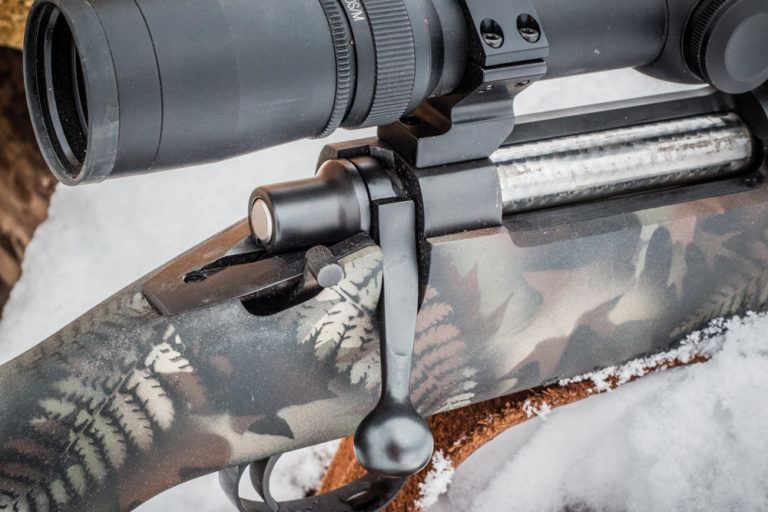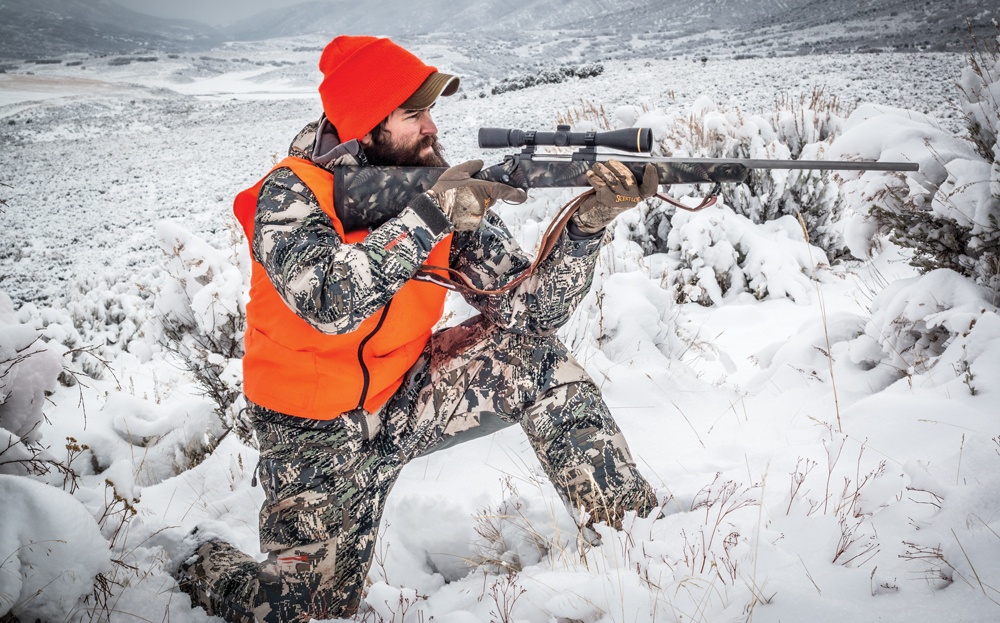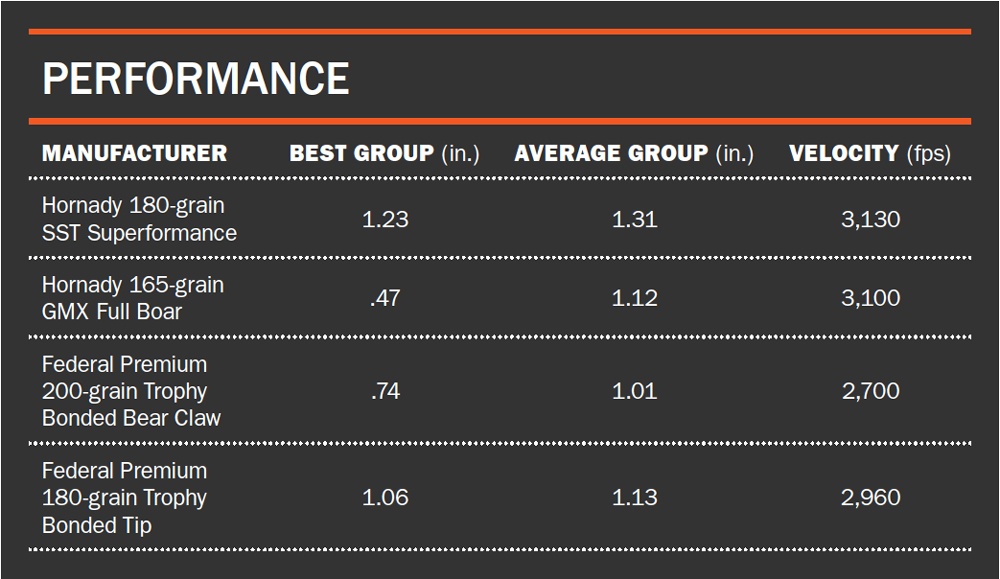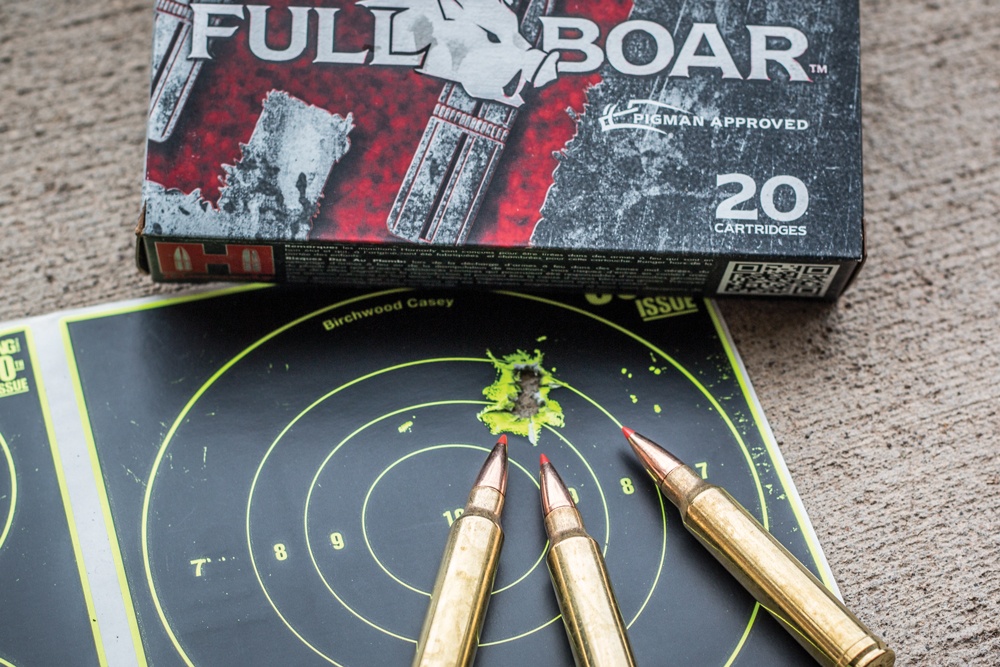

Tailored to fit its user and boasting cutting-edge materials, the NULA Model 28 is at the summit of lightweight rifle designs.
This year marks the 30th anniversary since Melvin Forbes introduced his first ultra light rifle, the Model 20, back in 1985. Since then Forbes has built a formidable reputation as the premiere lightweight rifle manufacturer in the business, thanks in large part to his build-from-scratch approach and groundbreaking stock designs.
That first Model 20, which was based on a Remington 700 action, weighed just under 5 pounds without a scope and was, for several years, most frequently chambered in .284 Winchester. It got its name from the 20-ounce action, which was scaled down from the 700 version to save weight. At the time Forbes started Ultra Light Arms, which he ran until 1999 when he sold the company to Colt. After a bit of a debacle, he got the company back in 2000 and changed the name to New Ultra Light Arms (NULA), which is how it remains to this day.
Forbes now builds a number of different models, each of which is designed around a particular cartridge. By tailoring the action to fit the cartridge, Forbes is able to reduce weight, so even the Model 28 — which is built around medium-action magnums — reviewed for this article weighs just 6 pounds. Each of NULA’s rifles feature a Timney trigger and Talley scope rings.
At the heart of Forbes’ ultra light rifle design is his innovative rifle stock, which weighs just about a pound. As he said, sometimes success comes when you start from scratch and head out against the grain of popular opinion.
“I looked at what other manufacturers in the industry were doing with their stock designs, and I decided there had to be a better way to do it,” Forbes said. “So I march to the beat of my own drum. It really comes down to physics, which a lot of people just ignore.”

Forbes’ stock is a thing of beauty. The initial design came from his collaboration with two friends in the aerospace industry and features Kevlar and graphite composite material with full-length pillar bedding. The stock is extremely rigid and allows for almost perfectly consistent pressure along the entirety of the barrel, thus stabilizing barrel harmonics and creating supreme accuracy.
Interestingly enough, the stabilized barrel harmonics also means that different sized bullets shoot to the same point of impact, which is not the case for other rifles designs. Typically even a change from 165- to 185-grain bullets requires an adjustment on the scope dials, but with Forbes’ bedding technique and stock design those two bullets will shoot to the same point of impact every time. The rifle I reviewed was the Model 28 in .300 Win. Mag., and one of the main questions I posed to Forbes was about how you deal with that kind of recoil out of a 6-pound rifle. My assumption was that it’d be about like getting kicked by a mule.
“Again, it goes back to the physics of recoil and stock design,” Forbes said. “Recoil is the force moving from the center of the bore in a rearward direction. Most stocks fail to deliver that recoil directly to the body because of the angle of the buttstock design, and this makes recoil more severe.”
Forbes’ stock, however, lines the bore up directly with your shoulder, allowing the body to absorb recoil head on, which actually softens the blow. The other major factor is length of pull, which is why Forbes takes your physical build into consideration when making a custom rifle. According to Forbes, proper stock design makes a .300 Win. Mag. feel more like a .30-06 in terms of recoil, which is pretty impressive for a 6-pound rifle. The other concern I shared with Forbes was how difficult so many lightweight rifles are to shoot accurately; even a light breeze makes it hard to keep such a rifle steady. That issue, he said, is really about balance.
“That was the benefit of not starting with someone else’s rifle and trying to force it to work with what I wanted,” Forbes said. “I intentionally built a rifle that would be perfectly balanced in hand. From the action to the stock, barrel and scope, the weight is all distributed so that when you put the gun to your shoulder it’s a natural, solid fit.”
Field Ready
As a Western hunter, what intrigued me most about Forbes’ rifle was the promise of a lightweight rifle for mountain excursions that would actually shoot with accuracy. I’ve handled so-called “mountain rifles” in the past that wouldn’t shoot 2-inch groups at 100 yards, and while fine to carry didn’t exactly leave me feeling confident I could make a 250-300 yard shot. Likewise, most mountain rifles are offered in .308 or smaller, which is passable, but for elk and larger game I’d rather have the stopping power of a .300 Win. Mag., even if there’s a bit more recoil.

I also liked the potential of the Model 28 because it’d be equally well suited for any North American big game hunting, including Midwestern whitetails or black bears in the Pacific Northwest. If I was going to buy one rifle to hunt them all—God and my wife both know I could never be a one-rifle man—the Model 28 in .300 Win. Mag. would definitely do the trick. And at $3,900 it’d probably be the only rifle I could afford, so I’d need something that could do it all.
At the range and in the field, Forbes’ rifle did exactly what he said it would. It is by far and away one of the best balanced rifles I’ve ever shot, which makes offhand or shooting from sticks relatively easy. Recoil was really not that bad. I shot 10 rounds consecutively offhand and didn’t want to curl up into the fetal position, so I’d call that a win. Obviously the rifle is great to carry afield because of its slender dimensions.
Range Data
I tested the Model 28 at 100 yards using four different loads: Hornady 180-grain SST Superformance, Hornady 165-grain GMX Full Boar, Federal Premium 200-grain Trophy Bonded Bear Claw and Federal Premium 180-grain Trophy Bonded Tip. Accuracy was measured from 3-shot groups taken from a Caldwell Lead Sled from Brownells. Winds were generally in the 10-12 mph range. The optic used for testing was a Leupold VX-3 3.5-10x40mm.

The best group of the day came with Hornady’s 165-grain GMX Full Boar, which measured .47 inches with the digital caliper. The same load had an average group of 1.12 inches. The Model 28 also seemed to like the heavier Federal Premium 200-grain Trophy Bonded Bear Claw loads, which had a best group of .74 inches and an average of 1.01 inches. As Forbes claimed, regardless of bullet weight, the loads hit at the same point of impact, so no scope adjustments were made from load to load.
Parting Shots
Melvin Forbes has been building rifles for as long as I’ve been alive, and the man knows what he’s talking about. With superior stock design and a production scale that allows for quality over quantity, Forbes’ rifles really are among the best in show. The Model 28 offers a magnum-size action in a platform that weighs right around 6 pounds and delivers MOA accuracy or better, depending on load selection. At $3,900 it’s certainly not the cheapest rifle on the market, but the old adage about getting what you pay for holds true.

Editor's Note: This article originally appeared in the January 2016 issue of Gun Digest the Magazine.

Next Step: Get your FREE Printable Target Pack
Enhance your shooting precision with our 62 MOA Targets, perfect for rifles and handguns. Crafted in collaboration with Storm Tactical for accuracy and versatility.
Subscribe to the Gun Digest email newsletter and get your downloadable target pack sent straight to your inbox. Stay updated with the latest firearms info in the industry.

![Best Concealed Carry Guns In 2025 [Field Tested] Wilson Combat EDC X9S 1](https://gundigest.com/wp-content/uploads/Wilson-Combat-EDC-X9S-1-324x160.jpg)


![Best 9mm Carbine: Affordable PCCs [Tested] Ruger Carbine Shooting](https://gundigest.com/wp-content/uploads/Ruger-Carbine-Shooting-100x70.jpg)
![Best AR-15: Top Options Available Today [Field Tested] Harrington and Richardson PSA XM177E2 feature](https://gundigest.com/wp-content/uploads/Harrington-and-Richardson-PSA-XM177E2-feature-100x70.jpg)
